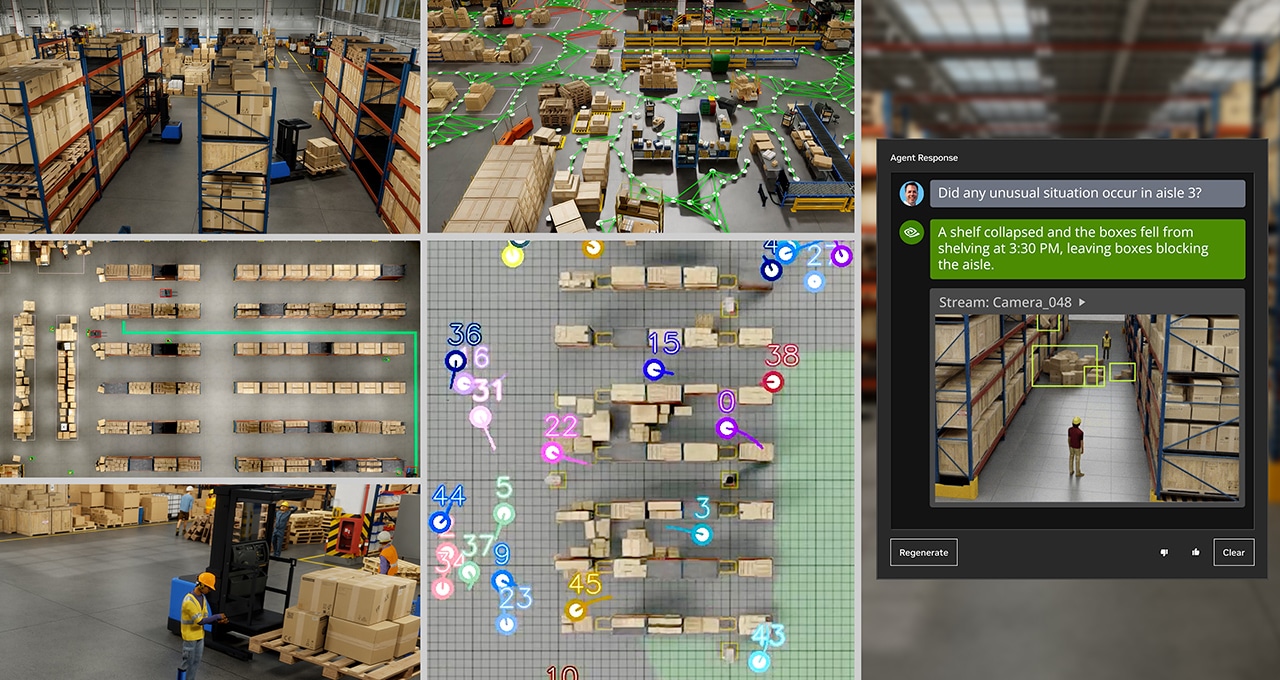Simplifying Industrial Automation with Real-Time Multi-Camera AI
Published:
As the developer of the Metropolis multi-camera tracking system, I am excited to share how our technology, alongside NVIDIA’s suite of AI and digital twin software, is revolutionizing industrial automation. On March 18, 2024, NVIDIA showcased the synergy of Omniverse, Metropolis, Isaac, and cuOpt, creating an innovative environment for AI and robot training in complex industrial spaces.
The heart of this transformation is the use of real-time AI to tackle challenges in manufacturing, logistics, and robotics. Industries burdened with heavy, costly equipment, and intricate facilities are now turning to a simulation-first strategy, heralding a new era of automation efficiency.
During NVIDIA’s GTC keynote, CEO Jensen Huang demonstrated the power of digital twins—a virtual mirror of real-world operations. These twins allow developers like myself to design, test, and perfect AI systems in a simulated world before implementing them in actual industrial settings, leading to tremendous savings in time and cost.
The Metropolis platform, a cornerstone of this ecosystem, integrates data from 100 simulated cameras to create a comprehensive map of warehouse activity. This map is crucial for optimizing the routes of autonomous mobile robots (AMRs) by providing a unified view of worker movements. Coupled with the NVIDIA Isaac Perceptor’s ability to process input from multiple sensors and the cuOpt engine’s route optimization capabilities, Metropolis ensures seamless, real-time coordination of warehouse operations.
This synergy is exemplified in an AI gym—a simulated environment where AI agents and robots are trained to handle unpredictable scenarios. When unexpected incidents occur, such as an obstruction on an AMR’s route, Metropolis updates the occupancy grid in real-time. cuOpt then recalculates the optimal path, minimizing disruptions and maintaining smooth operations.
Moreover, Metropolis is pivotal in developing AI agents that can process and interpret vast amounts of visual data. Through the NVIDIA Visual Insight Agent framework, operations teams can quickly understand and react to situations, enhancing decision-making with insights generated by AI.
By participating in the creation of such an interconnected and intelligent system, I am proud to contribute to the advancement of industrial automation. This collaborative effort not only showcases the potential of AI and digital twins but also highlights the importance of innovation in tackling the complexities of modern industry.
For more details on these groundbreaking technologies and their applications in industrial digitalization, consider attending NVIDIA’s GTC, a premier global AI conference.

